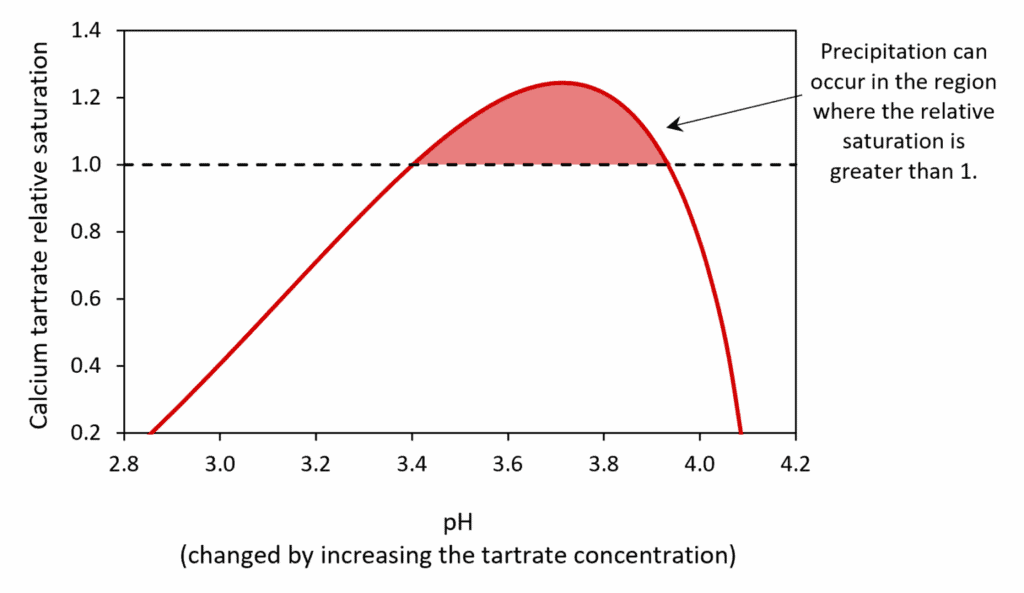Calcium tartrate is a compound that can occur in wine because of tartaric acid combining with calcium ions and posing significant challenges for winemakers. It is different from potassium bitartrate and cooling the wine to low temperatures has very little effect and the precipitation can occur months after the wine has been bottled.
This research project aimed to address the complicated issue of calcium tartrate and other calcium compound precipitation in bottled wines. Currently, the wine industry relies primarily on cold stabilisation as its primary method of preventing precipitation, but its efficacy has been declining despite the use of numerous additives. As a result, this research aimed to transform this by developing and validating a comprehensive mathematical framework that can predict calcium tartrate precipitation under a wide range of conditions.
The objective was to develop a robust model employing cutting-edge machine-learning techniques through testing and trials of reference wines. The resulting model would be capable of simulating probable precipitation scenarios based on the chemical components of wine and their interactions. The model would then be validated using both real and simulated wine samples, allowing for future model improvement and the development of practical solutions to problems associated with precipitation.
The new knowledge generated by this research will provide winemakers with a toolset and set of guidelines to assist in reducing the risk of precipitation after bottling. This research will therefore help to protect the wine industry from potential challenges posed by calcium precipitation in bottled wines by increasing wine quality and reducing precipitation in bottled wines.

















